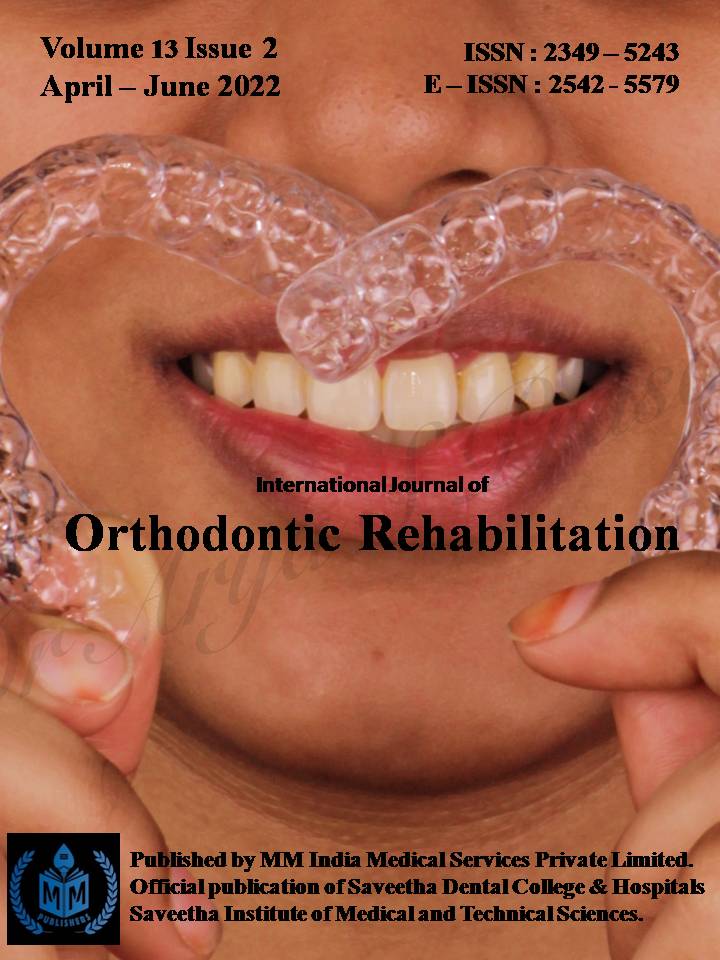THREE DIMENSIONAL ANALYSIS OF DENTAL ARCH FORMS IN SOUTH INDIAN POPULATION ORIGINAL RESEARCH
Main Article Content
Abstract
Aim: The aim of this study was to do a 3-dimensional analysis of the upper and lower dental arch forms and compare the same between male and female South Indian subjects who were not previously treated with fixed orthodontic appliances.
Materials and Methods: The sample consisted of 3D scans of dental casts from 50 untreated patients(25 males and 25 females) in permanent dentition. An assessment of the arch form was performed using angular and linear values on scans using a software(MEDIT).The data was tabulated and statistically analyzed using SPSS software and Student’s t test(2- tailed) was used to determine statistical significance of differences in measurements between the two groups.
Results: In male subjects the intercanine, intermolar, interpremolar diameters and arch depth were significantly greater than females and there was a statistically significant difference (p value=<0.05).
Conclusion: Ovoid arch form is commonly seen in both South Indian males and females followed by broader arch forms in males and tapered arch forms in females. South Indian males have wider arches when compared to females.
Article Details

This work is licensed under a Creative Commons Attribution-NonCommercial 4.0 International License.
References
Website [Internet]. [cited 2020 Jun 29]. Available from: Evaluation of arch forms depending on the angle classification. - PubMed - NCBI [Internet]. [cited 2020 Apr 5]. Available from: https://www.ncbi.nlm.nih.gov/pubmed/27867068
Website [Internet]. [cited 2020 Jun 29]. Available from: Stability of transverse expansion in the mandibular arch. - PubMed - NCBI [Internet]. [cited 2020 Apr 5]. Available from: https://www.ncbi.nlm.nih.gov/pubmed/12970662
Website [Internet]. [cited 2020 Jun 29]. Available from: A new concept of mandibular dental arch forms with normal occlusion. - PubMed - NCBI [Internet]. [cited 2020 Apr 5]. Available from: https://www.ncbi.nlm.nih.gov/pubmed/18174064

